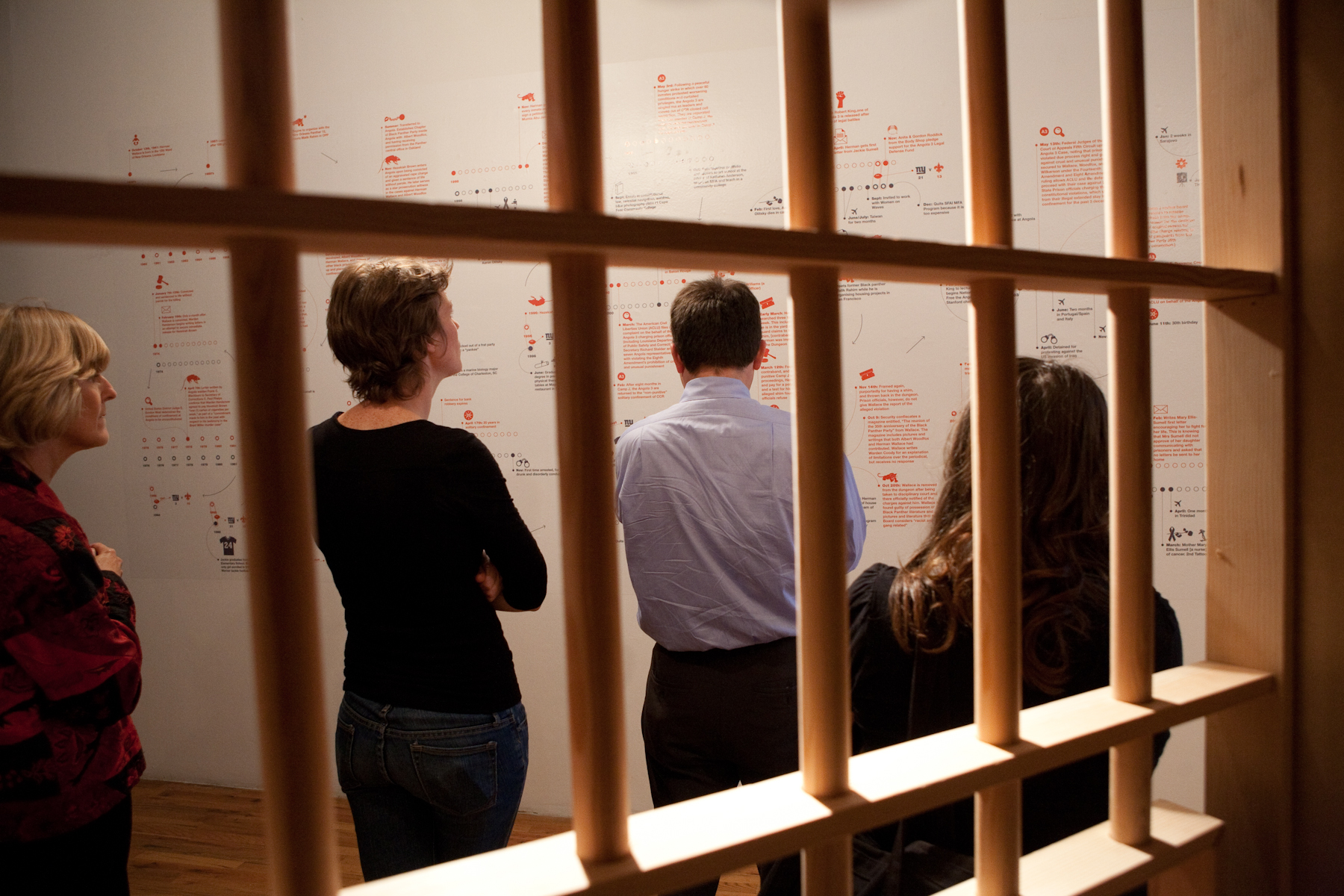
Herman Joshua Wallace holds an ambitious dream: to witness the creation of a lavishly-decorated dream house.
This building would be used as a community centre for the underprivileged youth of New Orleans; it would include gardens, a swimming pool, and various works of art. More importantly, it would serve as a safe haven from the harsh realities of the inner-city streets and the temptations of easy money through crime.
However, like all fine things in life, there’s a catch: Wallace has been been in solitary confinement in a Louisiana state prison since 1972. In other words, he has spent 40 years, 10 months, eight days (and counting) in a 6 x 9 ft. prison cell, also known as “the dungeon.”
Angad Singh Bhalla’s documentary Herman’s House is not a tale of a prisoner resigned to his unfortunate fate, instead it is a story of a gentle and well-spoken individual whose hopes remain high despite all indications to the contrary. His foremost champion is Jackie Sumell, an activist and an artist born in New York, who began corresponding with Wallace more than a decade ago. With the help of Wallace’s sister, Victoria Wallace, Sumell uses her anger, her love, and her creativity to shed light on a man who has spent more time in solitary confinement than any other living American prisoner.
In April 1972, Brent Miller, a correctional officer in Louisiana’s Angola prison, died after being brutally stabbed nearly 32 times. The prison warden quickly charged three inmates with the murder, and they were sentenced to life in prison in solitary confinement. Wallace’s initial prison stint began in 1967 on a bank robbery charge. Wallace remains incarcerated at Angola alongside Albert Woodfox. However, the third inmate, Robert King, was released in 2001 after a lengthy, legal battle. They are known as the “Angola Three.”
Wallace’s motions for appeal have routinely been denied by the Louisiana prison review board, despite the fact that neither the murder weapon nor fingerprints were ever conclusively tied to the three inmates.
In order to raise awareness for Wallace’s struggles, Sumell began working on a major art project. The House That Herman Built has been showcased in over 12 galleries in five countries. The exhibition’s most famous piece includes a life-sized woodworked model of Wallace’s prison cell, down to the exact measurements. Visitors were encouraged to enter the cell and experience the harsh living space firsthand.
This is a powerful film centering around a powerless individual. Bhalla often uses black and white animation and Louisiana jazz music to great emotional effect. The camera is patient, often remaining in focus on the numerous houses he encounters, from Sumell’s majestic childhood home in Long Island, to the modest New Orleans townhouse owned by Wallace’s sister.
As for the central figure, the viewer can only hear Wallace’s voice via telephone, yet, ultimately it doesn’t matter what he looks like. This physical distance actually works in favour of the overall theme. Wallace’s voice floats in and out throughout the film; it is resounding but exhausted, hopeful yet regretful. Physically, he is a near ghost-like figure. After all, no one of any significance has seen him in over 40 years. But spiritually and imaginatively? He endures.
Herman’s House screens Nov. 16 at 7 p.m. in Room H-110, 1455 de Maisonneuve. Director Angad Bhalla will be in attendance.




